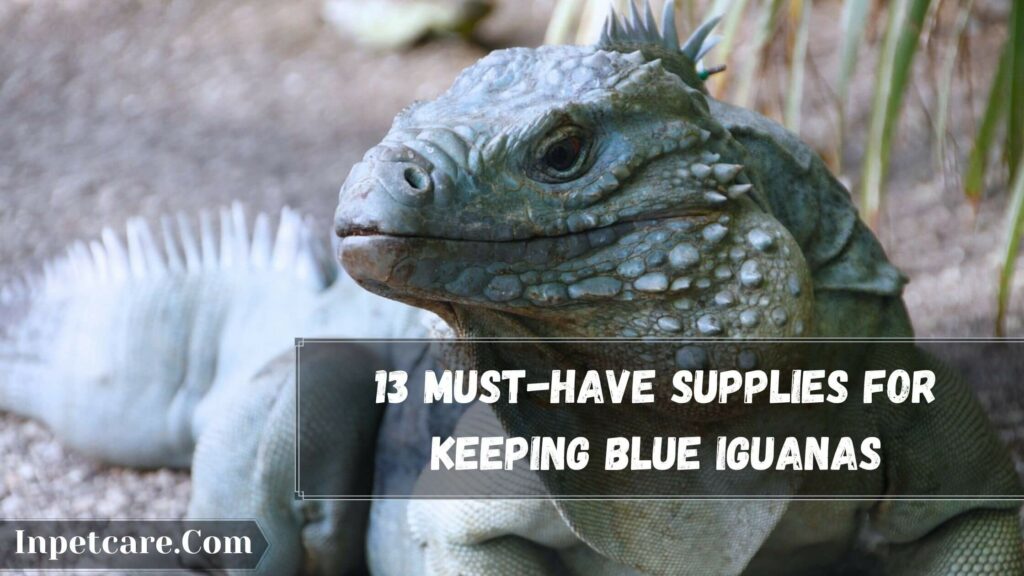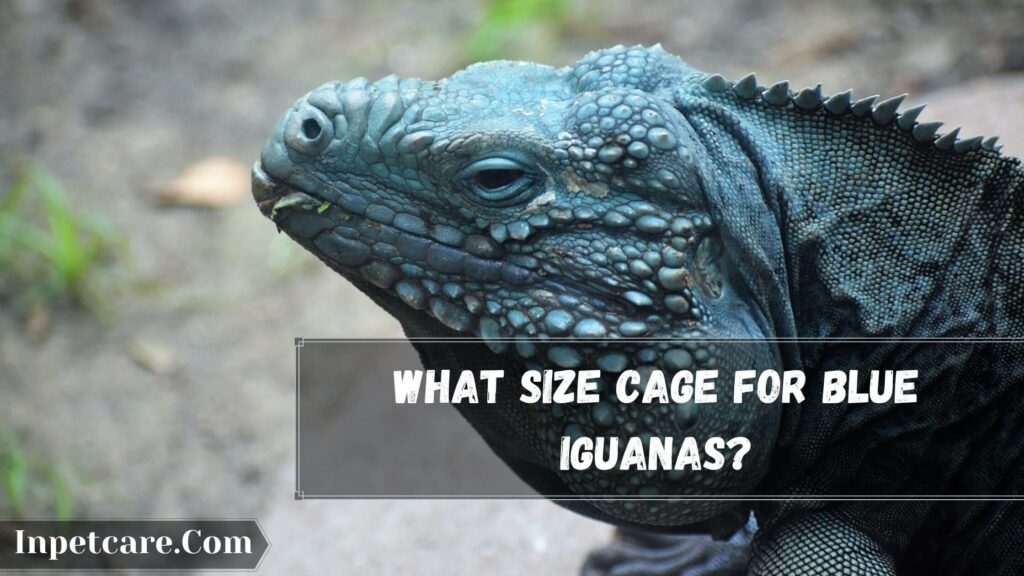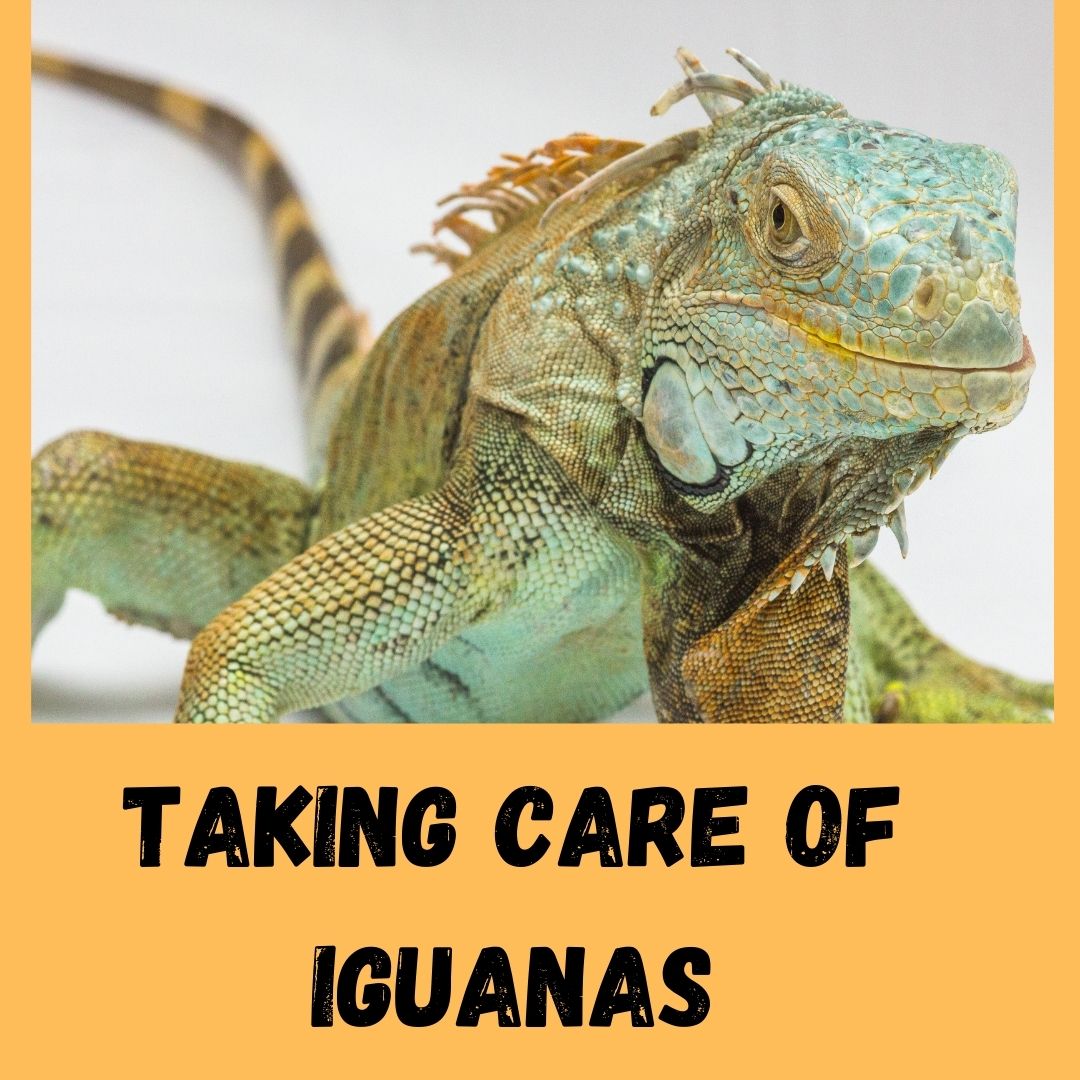Blue Iguana is one of the most sought-after pet species that has been fostered in captivity over a lengthy period. They are well-known for their tranquil disposition and vibrant colors. Additionally, they are demanding to maintain properly.
How To Take Care Of A Blue Iguana
Iguana also has demands for space and heat in addition to special lighting. It can be difficult for pet owners to take care of their pets. That’s why I have put together a complete guide to how to care for the blue Iguana. First, let’s examine the essential items you require to care for our blue Iguana.
13 Must-Have Supplies for keeping Blue Iguanas

- Plants: They must recreate a natural setting within the enclosure and provide shade and places to hide. You should select edible ones for the lizards, as they frequently consume their plant matter because of boredom.
- Light Source: The light source is required for Iguana to create Vitamin D and take in calcium effectively. Without it, they could be inactive and sluggish.
- Climbing Areas and Decor: Iguanas are avid climbers, which is why climbing obstacles are required within their enclosures.
- Moss: Beds are essential for iguanas. Therefore, the moss could fill in that gap.
- Substrate: Use substrate, however, avoid one made of small particles because it could cause impaction if the Iguana inadvertently consumes it.
- The pelleted Iguana Food: It’s always recommended to purchase commercially-produced pelleted food for iguanas if you run out of fresh fruits and vegetables.
- Enclosure: Always select the right size enclosure to protect your Iguana life. They require a spacious area with a gradient of temperature to freely roam and adjust their body temperature to their requirements.
- Calcium Supplements: If you feel that food is not nutrient-rich, the calcium to phosphorus ratio, which can interfere with calcium absorption, is. Calcium supplements are an excellent option to take in emergencies such as deficiency in calcium.
- Under Tank Heating System: The floor of the enclosure must be sufficiently warm to keep the Iguana active. So it is recommended to install an under-tank heater. Is suggested.
- UVA and UVB lighting: Make sure you have UVA and UVB lighting and its fixture. The UVA/B light aids in digestion as well as being active and help maintain normal bodily functions.
- Thermometer: A thermometer is required to monitor the temperature inside the enclosure. Without a thermometer, you will not be able to initiate the required temperature for your Iguana correctly.
- Food Dish Food Dish: Pick a large dish but not too deep to provide the best food for an Iguana.
- Water Bowl: A water bowl is essential, but be sure to select one that offers the water you need when your pet is thirsty.
Blue Iguana’s Health
9 Signs Of A Healthy Blue Iguana
- Alerting.
- Eyes that are clear and bright without swelling or discharge.
- Active.
- A full but very muscular story.
- The droppings are firm but not swollen.
- Regularly eating and pooping.
- Skin is soft and smooth, without any sores or swelling.
- Clean nose.
- Clear vent.
11 Signs Of A Sick Blue Iguana
- Lethargic
- Discoloration Of Skin.
- Discharge From Eyes
- Discharge From Nose
- Unexpected Weight Loss
- Decreased Appetite
- Lesions & Swelling
- Retained Shed
- Sneezing
- Difficulty In Breathing
- Bloody Stool
Blue Iguanas’ Diet
What To Feed Blues Iguanas?
It is crucial to feed your blue Iguanas an appropriate and balanced diet, including 70 percent dark leafy greens such as dandelion, turnip, turnip greens, and spinach. The remaining 20 percent of their diet must include vegetables such as carrots, cabbages, or broccoli.
The remainder, 10%, can include fruits such as mangoes, bananas, strawberries, etc. It is crucial to get the benefits of commercially-produced pellets Iguana diet and ensure that freshwater is available.
If your Iguana cannot consume the commercial diet by itself or by itself, you could mix it in with vegetables or any other food with a fruit flavor to stimulate consumption. To make it even more appealing, feed it once per every day. Do not feed any vegetable or fruit as a whole since Iguana prefers to swallow the food instead of chewing. Therefore, it is recommended to chop, smash, or cut the fruits and vegetables into bite-sized pieces for eating.
Additionally, they should supplement their diet by taking Vitamin d as well as a Calcium supplement. Foods that are not rich in calcium or have low calcium to phosphorus ratio must not be consumed, and vitamin supplements should be offered as an alternative to daily.
The best method of supplementing your Iguana is to sprinkle it on their food. Please don’t provide a protein-rich diet since it can cause problems in the digestive tracts. In addition, eating any diet high in animal protein could cause kidney disease in Iguana. Let’s now examine the size of the cage that blue Iguana is required.
Blue Iguanas’ Housing
What Size Cage For Blue Iguanas?

Be sure to choose an appropriate sized and secured enclosure for blue Iguanas. The enclosure should also have a secured opening that is secure against escape. Additionally, the areas where iguanas spend most of their time should provide ample space to move about easily.
When they reach the age of adulthood, they will require an upgrade to their enclosure size. By their age and the speed at which they grow, you’ll need to purchase one. These are the top Iguana tanks. Iguana will attain adult size in three to four years in the ideal circumstances.
So an adult Iguana requires a UV A/B lighting system of 55 gallons, but 75 gallons is the ideal size. The height is also important because iguanas are arboreal and enjoy climbing. Install climbing obstacles.
4 Things You Need For Blue Iguanas Enclosure
Temperature: Always maintain a temperature gradient between 100 and 120deg F in the warmer part of the area and 80 degrees F at the lower end. This will allow the Iguana to regulate body temperature. You can consider using ceramic heat bulbs or incandescent bulbs for the principal source of heat, using two thermometers.
Place one thermometer in the basking zone, and another is in the cooler area. Beware of hot rocks since they burn the reptiles most of the time; an incandescent daylight bulb can be used to create warm temperatures in the basking region in your Iguana.
However, it would help if you only thought about using UV bulbs during the day. If you live in a warm climate, you could also place them directly into direct sunlight, unfiltered through a window to ensure proper UV exposure.
Decoration. It is essential to have more than just substrates, but also a concealing space and branches for them to climb with and climb.
Humidity. It is essential to maintain 70-90% humidity within their enclosure. The best method for maintaining the humidity is to mist. A proper humidity level is an essential consideration to keep your iguanas healthy. Make sure to shade them properly and keep them well-hydrated.
Substrates. To replicate the natural habitat of your iguanas, think about it in the cage, which is why substations comprise hard particles. Beware of any loose material.
FAQ
Conclusion
I hope that you’ve got all the necessary information about how to take care of the Blue Iguana. Should you still have concerns about caring for blue iguanas, feel free to leave a comment below.
Be sure to share this article if you enjoy this article. A single share can aid someone else in providing an appropriate environment for their reptiles and lizards. Follow us on social media

94% of pet owners say their animal pal makes them smile more than once a day. In 2007, I realized that I was made for saving Animals. My father is a Vet, and I think every pet deserves one. I started this blog, “InPetCare”, in 2019 with my father to enlighten a wider audience.

